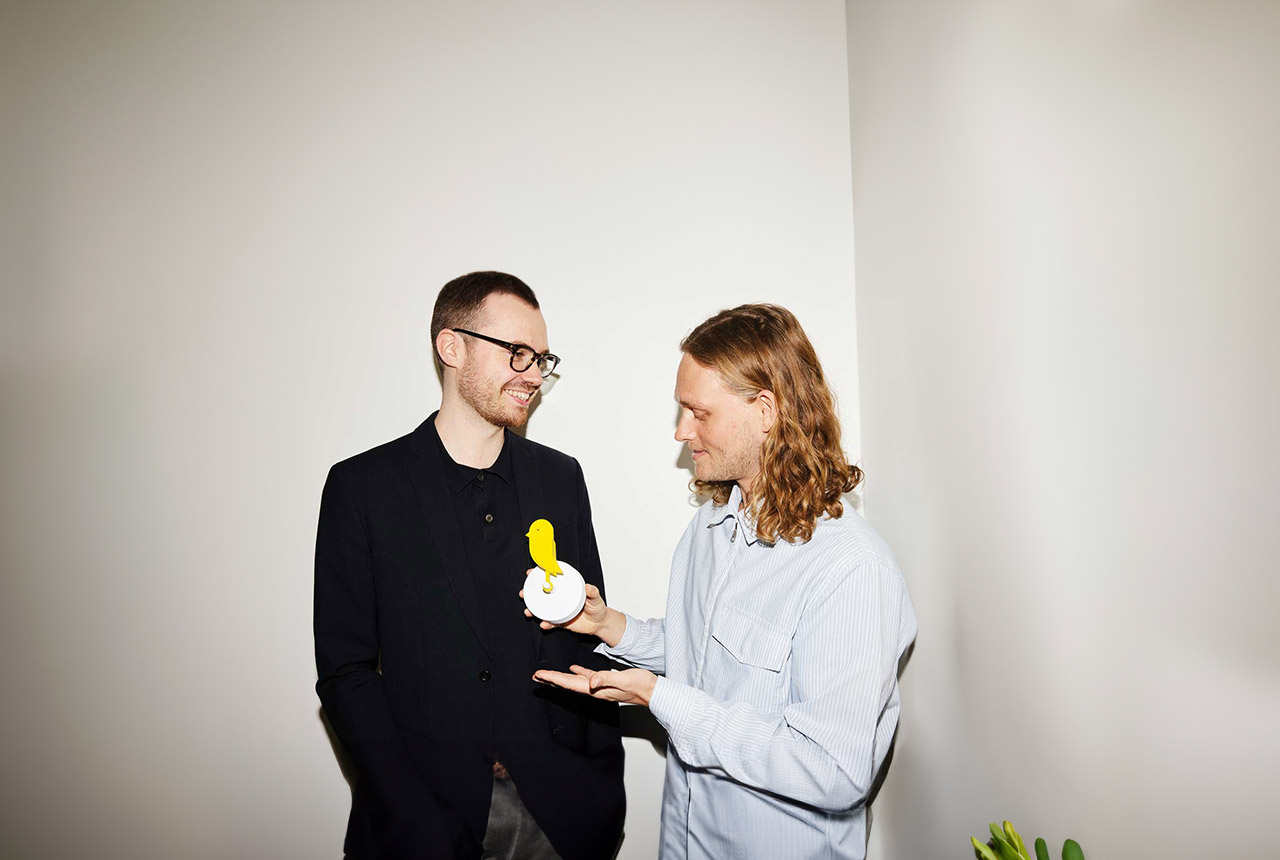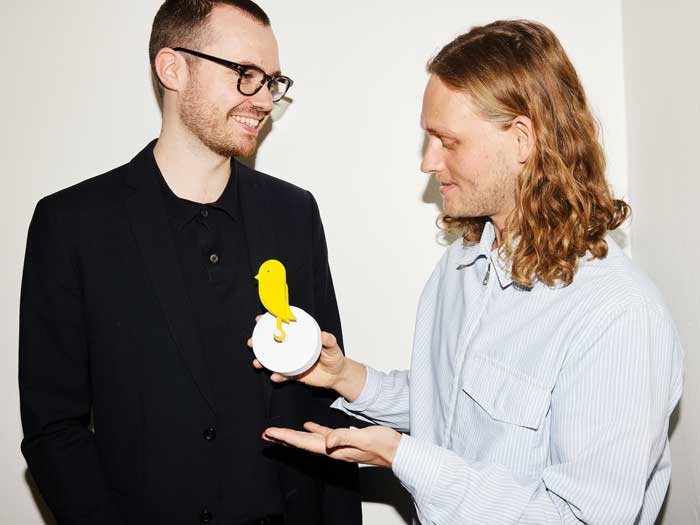
This simple carbon dioxide detector is both functional and cute
 Canairi co-founders Hans Høite Augustenborg and Andreas Kofoed Sørensen want to make it easy to measure C02 levels (Photograph by Rasmus Luckmann)
Canairi co-founders Hans Høite Augustenborg and Andreas Kofoed Sørensen want to make it easy to measure C02 levels (Photograph by Rasmus Luckmann)
Hans Høite Augustenborg and Andreas Kofoed Sørensen were sure it was a million-dollar idea: an attractive and utterly simple device that alerts users when CO2 levels in the air rise above the recommended limit.
The two Danish university students had been chums since primary school. Augustenborg was an artsy ideas man and would soon be working in advertising, while Sørensen had a knack for numbers and was about to graduate from business school. It was Augustenborg’s father who had triggered the idea for the invention—growing up, he had always stressed to his son the importance of fresh indoor air, opening the windows on even the chilliest Copenhagen mornings.
Augustenborg’s dad was on to something. High indoor CO2 levels are recognized internationally as a health concern and can be caused by fuel-burning appliances, off-gassing from underlying soil or—most commonly—humans’ breathing.
Their device would resemble a yellow canary on a white perch. When indoor CO2 levels are below the threshold of 1,000 parts per million, the canary sits erect. When they rise above that number, it swings down and appears to hang unconsciously from its perch until the user opens a window and ventilation is improved. No phone alerts, no lights, no noises, just a little yellow bird—the proverbial canary in the coal mine—that users would feel compelled to care for.
“The design really pushes the user to act by eliciting an emotional response,” says Augustenborg.
The two-man team created a sleek prototype and a business plan and began applying for start-up programs and grants. They were rejected at every turn.
“We were usually told our product wasn’t innovative enough,” says Augustenborg. The problem, he says, is that the national funding programs they were applying for focus on technical products that incorporate elements like biochemistry, machine learning and artificial intelligence, while undervaluing design and originality.
The Canairi uses a standard sensor that activates when CO2 in the air hits 1,000 ppm. Their innovation—which they now hold a patent on in Denmark—is that the sensor triggers a motor that causes the bird to move.
As Augustenborg puts it, they also believe that “translating data into visual communication to nudge the user” to enact a behaviour—in this case, cracking a window—is an innovation in itself.
To get liftoff, Augustenborg and Sørensen took two months off their day jobs—by April 4, 2022, they had quit them—and worked full-time on Canairi. They spent $2,500 on a series of social media ads which they used to collect the email addresses of 4,000 individuals interested in an early-bird discount. Then they launched a Kickstarter campaign
Canairi launched on April 5 with a modest fundraising goal of about $10,000 Canadian. By the end of the first day, they had raised $50,000. National and then international media coverage followed. By the time the campaign ended a month later, they had raised almost $600,000, and now have some 4,000 orders to fulfill. So far, the U.S. is their biggest market; they have 137 backers in Canada.
“I like anything that makes the invisible visible,” says Melanie Langille, an environmental scientist and the president and CEO of the New Brunswick Lung Association. Still, she warns that an upright Canairi doesn’t necessarily mean indoor air is clean. Langille points to volatile organic compounds or VOCs, a general umbrella term for particulates found in a range of consumer goods from fragrances to cleaning products, that some other devices can detect. VOCs are hazardous and can be found in both indoor and outdoor air.
“This device certainly doesn’t hurt, but it’s not the whole picture,” says Langille.
Canairi may be one of the fledgling companies given a boost by the pandemic. Campaigns around the world highlighting the importance of ventilation have led to increased awareness of the problem that Canairi is trying to solve. “It embedded it in everyone’s brains,” says Augustenborg.
Canairi has partnered with a manufacturer in China that will produce the design from 100 per cent recycled plastic. They’ve also added a production manager to their team; the goal is to begin delivering Canairis to consumers this fall.
They’ve had offers from investors, though now they’re able to be a little more discerning. Says Augustenborg, “We’re waiting for the right one.”
SUSTAINABLE INNOVATIONS
Read about the app that’s helping to prevent food waste, the trend of indoor farming and the CPAs using their skills to fight climate change.